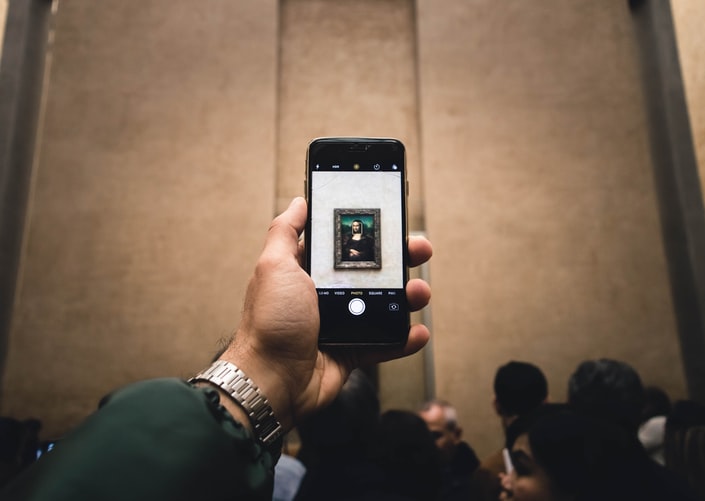‘Mona Lisa’ goes modern: art of the future
What is it about the Mona Lisa that has allowed her to endure for so long? What is it about that smile that still continues to draw a crowd, long after this (surprisingly small) portrait was put to canvas by Leonardo Di Vinci? From Panic at the Disco’s The Ballad of Mona Lisa, to Salvador Dali’s rather unnerving Self Portrait as Mona Lisa, even the philistines amongst us must confess that there is something about this painting that has wedged itself deep in our collective cultural zeitgeist. There is something, and I am not experienced or educated enough to say what it is exactly, that continuously puts each subsequent generation of art lovers to the test. “Look at me”, her little smirk seems to say, “look at me and you just try and figure it all out. I’ll be waiting.”
The decision by the the Louvre to incorporate Virtual Reality technology into their so-called “Leonardo blockbuster”, during which visitors to the Leonardo Exhibit will be able to don a VR headset and enter an immersive virtual space wherein they will be able to bypass such tedious barriers as the protective bulletproof glass and interact directly with the painting, reflects our continued intrigue with the painting. This project, which has been appropriately titled Mona Lisa: Beyond the glass, claims to be able to provide the public with glimpses of the masterpiece that are “hidden from the naked eye”.
The potential for VR technology to increase public access to the painting goes far beyond visitors at the Louvre putting on their headsets
As if that wasn’t enough, the potential for VR technology to increase public access to the painting goes far beyond visitors at the Louvre putting on their headsets after arriving at the museum. HTC VIVE Arts, the company whose partnership with the Louvre has made all of this possible, offers a subscription service named VIVEPORT, which provides members of the public with their own VR headsets. This will allow people to partake in the experience without ever having to leave the comfort of their homes – something that I’m certain would alleviate the concerns of elderly, disabled or less financially secure art lovers; providing them with the ability to “access this remarkable masterpiece by Leonardo Di Vinci through our home”, to quote the VIVE Arts director, Victoria Chang.
Everyone, it seems, has thought of everything – except what those who engage with this project will actually be looking at.
I don’t consider myself particularly uptight when it comes to the question of what art is, and I recognise that as our technological capabilities develop, human nature will naturally come to embrace said technologies, and find new ways to express itself. I doubt that we could come up with awe-inspiring cinematic works of art like Spirited Away without the development of animation, for example.
Pixels – even immersive – cannot replace the strokes of a brush
That being said, we must always be vigilant to prevent gimmicks or little tricks of technology from diluting our ability to experience works of art such as the Mona Lisa. Pixels – even immersive – cannot replace the strokes of a brush. That isn’t to say that they can’t be used to construct a work of art on their own, because I believe that they can, but something about replicating a portrait in this manner seems to cheapen the original piece. Quite honestly, all this talk about interacting with a painting or creating an immersive experience is strangely reminiscent of Walking with Dinosaurs Live, an example of skilled puppetry and theatre, but hardly a substitute for the real thing.
But I hope I’m wrong about this, I really do. Truly, my natural inclination is to rejoice at the potential for increased access to the original work of art that such a project would be able to provide. Except, my heart whispers to me, it’s not the original work of art at all, is it? It’s a replica, a shadow. The only difference between an interactive, immersive VR experience of the Mona Lisa and Googling a picture of the Mona Lisa on my laptop is the scale of grandiosity. Perhaps, to be able to put aside my concerns, I will have to try this VR experience for myself. I hope it will bring the portrait alive for many more millions of people. Only time, in its merciless onward march, will be able to tell.

Comments (1)